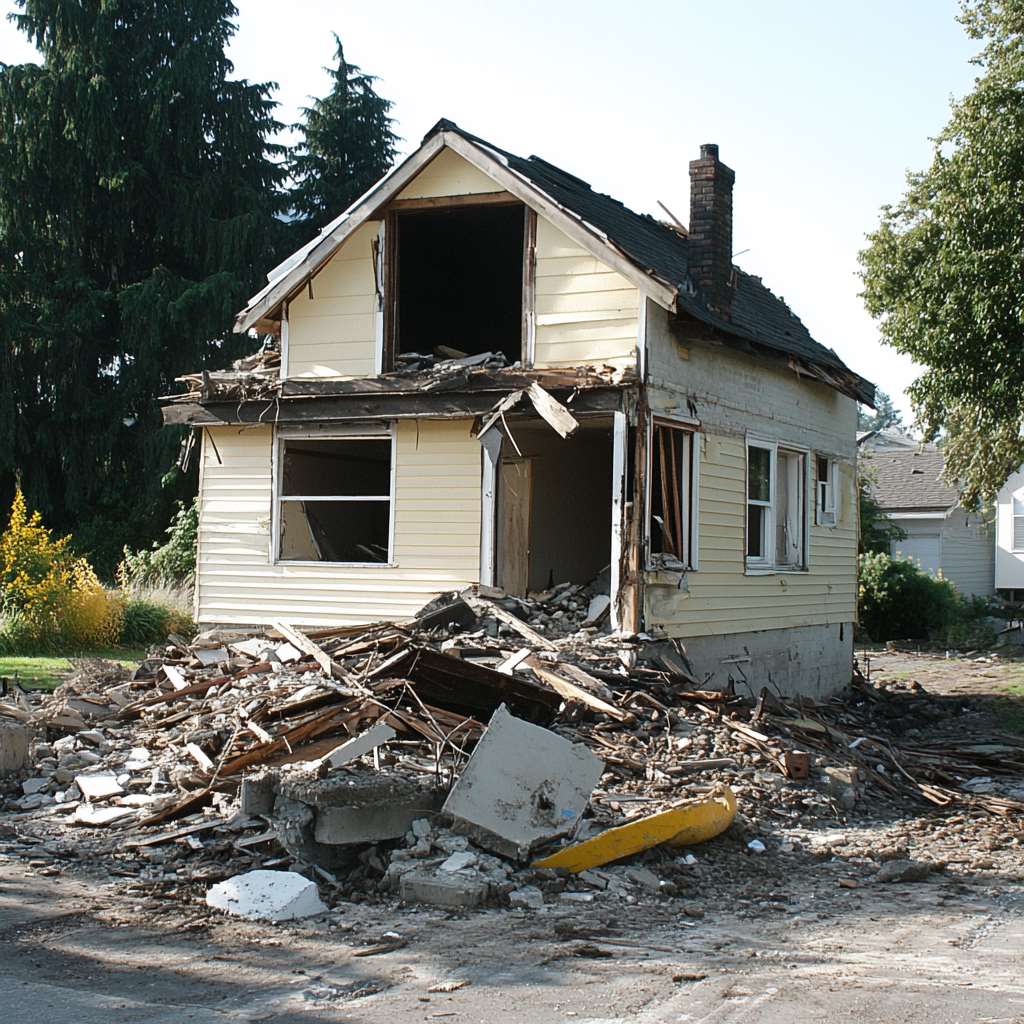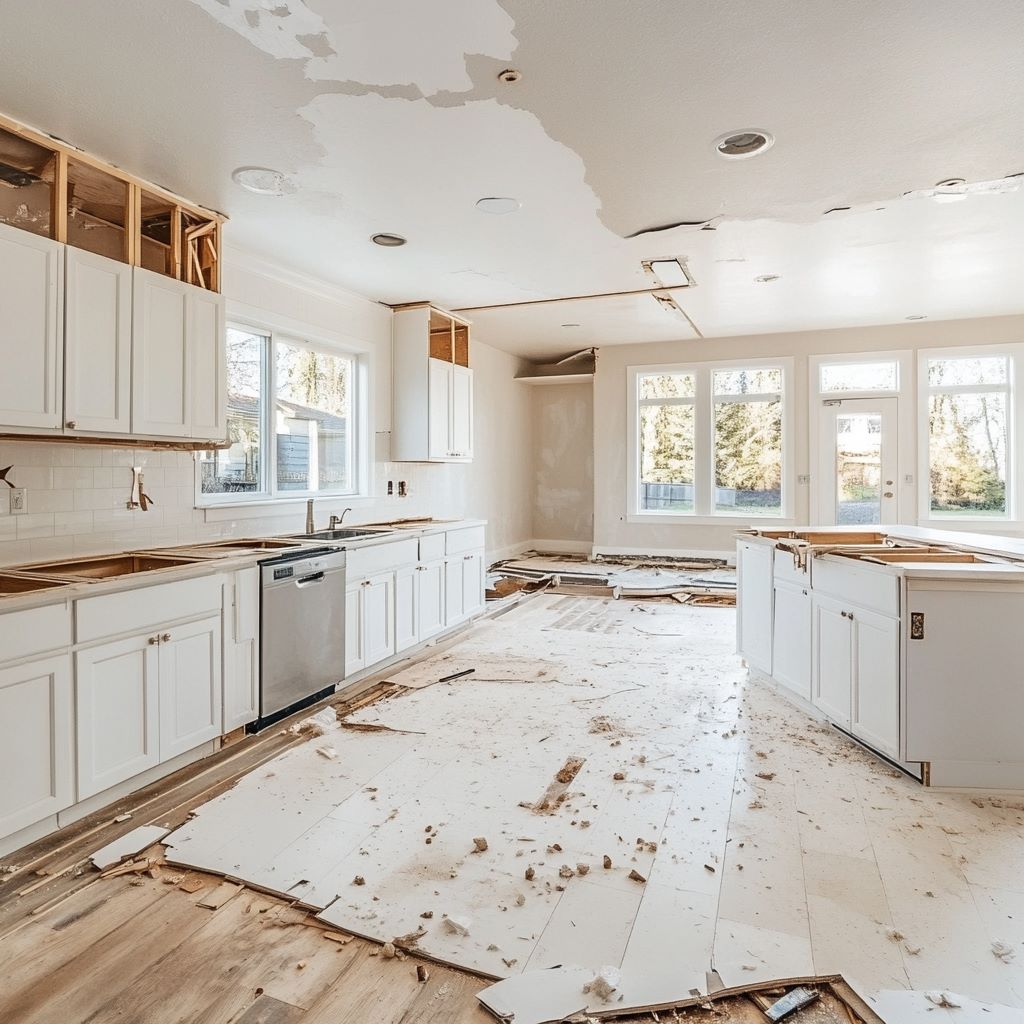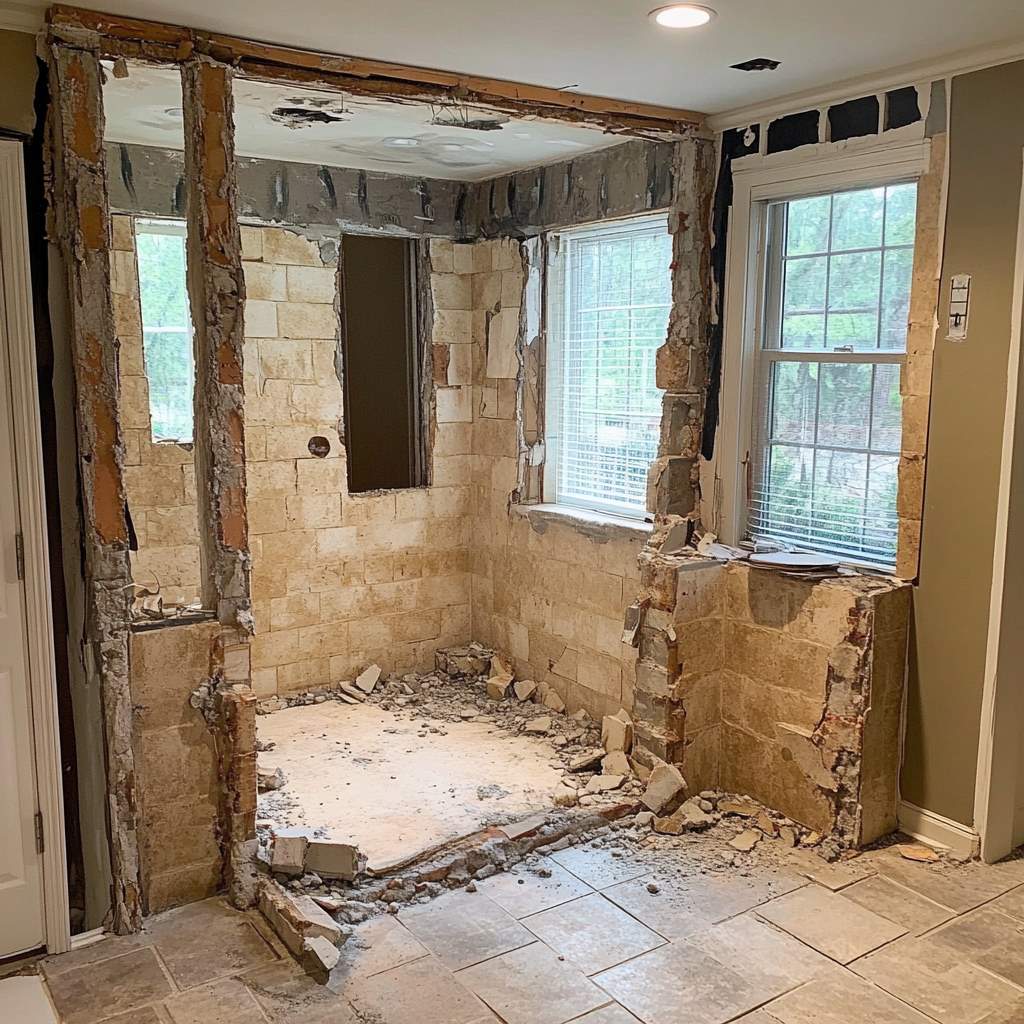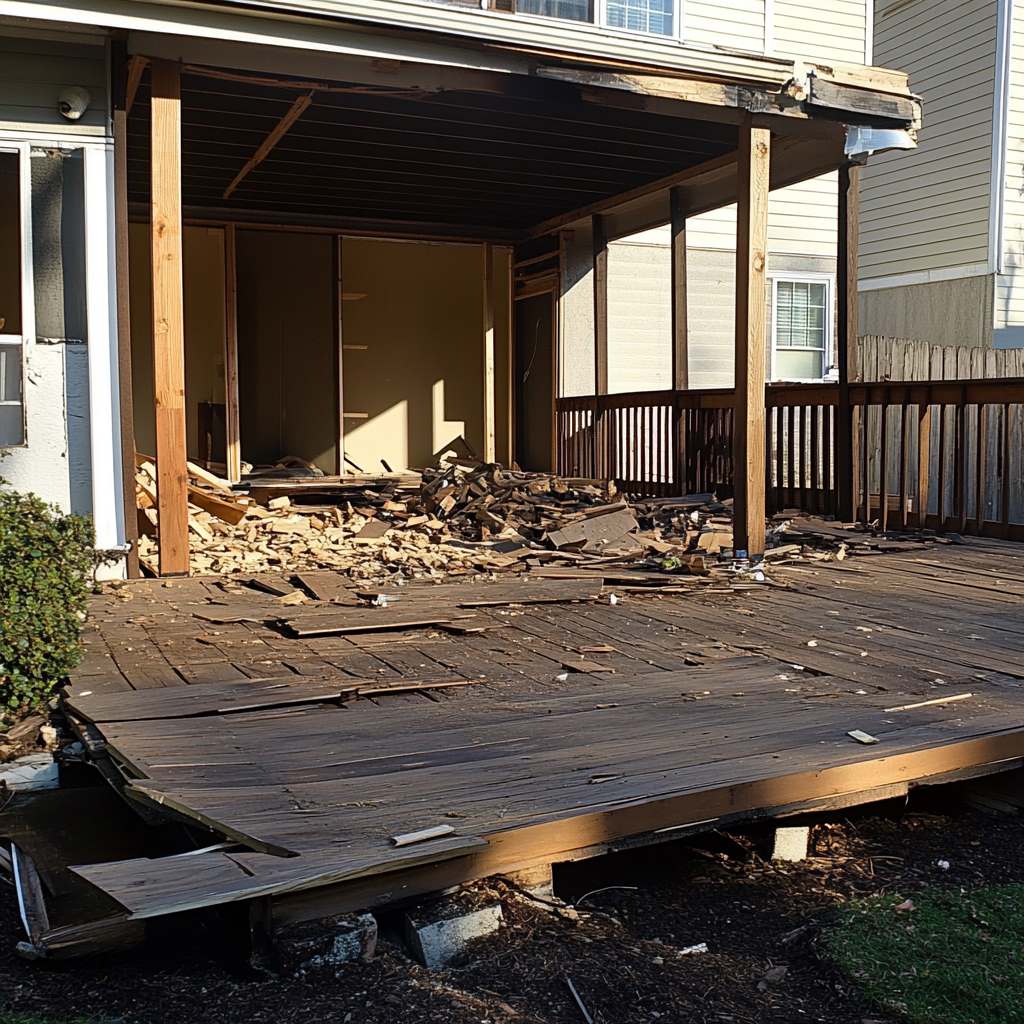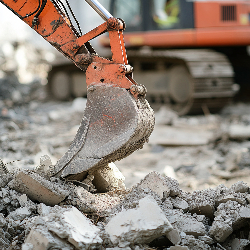Demolition might seem like a straightforward task, but there are various methods suited for different projects. Whether you’re in Snohomish County, King County, or Skagit County, it’s important to select the right approach for safety and efficiency. Choosing the right demolition method can save time, reduce costs, and make sure the project runs smoothly.
Key Takeaways
- Understand different demolition methods for various needs
- Choose the right approach to guaruantee safety and efficiency
- Save time and costs by selecting suitable demolition services
Interior Demolition
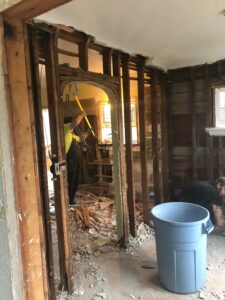
Interior demolition involves removing parts of a building’s interior while leaving the exterior intact. This often happens during renovations or remodeling projects where you don’t need to tear down the entire structure.
Common Scenarios
Renovations: When you are updating an old building, you may need to remove walls, ceilings, and floors.
Remodeling: Changing the layout of your home or office often requires interior demolition to create new spaces.
Techniques and Safety
Hand Tools: Workers use hammers, crowbars, and screwdrivers for precise removal of smaller elements like fixtures and cabinets.
Power Tools: Larger equipment like jackhammers and saws are used to take down walls and floors.
Safety Considerations
- Proper Ventilation: Make sure your work area is well-ventilated to avoid inhaling dust and fumes.
- Protective Gear: Always wear helmets, gloves, and goggles.
- Debris Management: Have a plan for the quick and safe removal of debris to prevent hazards.
Interior demolition is a key step in transforming spaces and requires careful planning and execution. PNW Demolition can offer expertise and professional services to make certain the job is done safely and effectively.
Selective Demolition (Interior and Exterior)
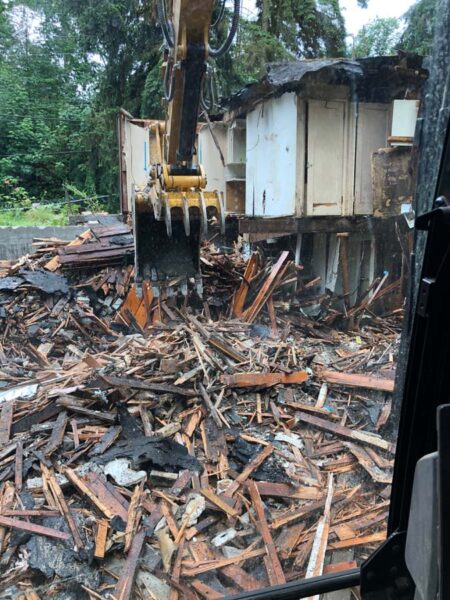
Selective demolition, also known as precision or focused demolition, is a specialized service that targets specific parts of a structure while keeping the rest intact. This method is ideal for situations where you need to preserve certain sections or materials.
Benefits
1. Preservation: Selective demolition helps retain historic structures or unique architectural features. 2. Cost-Effective: It can be more economical by reducing waste and reusing materials. 3. Safety: Minimizes risk by focusing on the removal of specific areas.
Example Projects
1. Historical Renovations: Preserving the façade of a historic building while updating its interiors. 2. Commercial Upgrades: Removing outdated mechanical systems without affecting the rest of the building. 3. Residential Remodels: Retaining the exterior walls while redesigning the interior layout.
PNW Demolition specializes in selective demolition, ensuring that your project maintains its structural integrity. This approach not only saves cost but also contributes to sustainability by minimizing waste.
Total or Whole Demolition
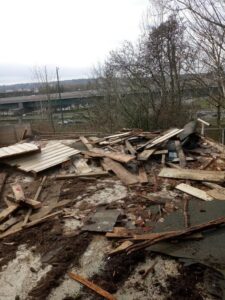
Total demolition is a comprehensive process that involves the complete removal of a structure. This method is often necessary for various reasons, such as old buildings that are beyond repair or structures that have become unsafe and pose a risk to the public.
Certain methods are commonly used for total demolition. One of the most dramatic is implosion, where strategically placed explosives cause the building to collapse in on itself.
Total demolition is often chosen for urban redevelopment projects, where the existing structure needs to be completely removed to make way for new construction.
- Old buildings that are beyond repair
- Unsafe structures that pose hazards
- Urban redevelopment projects
- Contaminated buildings needing complete removal
At PNW Demolition, we specialize in providing safe, effective total demolition services. Our team uses the latest technology and methods to make sure the demolition is carried out efficiently and safely.
Deconstruction
Deconstruction is a method that emphasizes the careful dismantling of buildings to maximize material recovery and minimize waste. Unlike traditional demolition, which focuses solely on tearing down structures quickly, deconstruction aims to salvage as many components as possible.
Key Principles of Deconstruction
- Selective Dismantling: Carefully taking apart buildings to preserve reusable materials.
- Material Recovery: Prioritizing the reuse and recycling of building materials, such as wood, bricks, and metals.
- Sustainability: Reducing the overall environmental impact by minimizing landfill waste.
Environmental Benefits
Deconstruction offers significant environmental advantages. By recycling and reusing materials, you can:
- Reduce landfill waste.
- Conserve natural resources.
- Lower carbon emissions from producing new materials.
Steps in a Deconstruction Project
- Initial Assessment: Evaluating the building to determine salvageable materials.
- Planning: Creating a detailed plan for safe and efficient dismantling.
- Selective Removal: Systematically removing valuable components like doors, windows, and fixtures.
Examples of Successful Deconstruction
PNW Demolition has implemented several successful deconstruction projects. By partnering with recycling centers and local craftsmen, they have managed to salvage up to 85% of building materials. These materials find new life in various construction and artistic projects, showcasing the effectiveness of deconstruction.
Mechanical Demolition
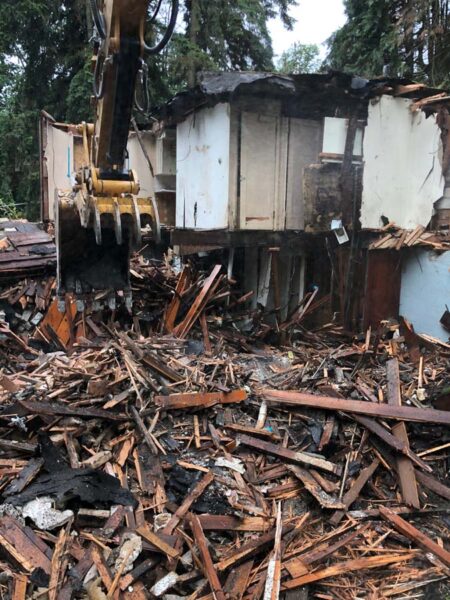
Mechanical demolition involves using heavy machinery to bring down structures. This method is fast and efficient, making it a popular choice for demolishing large buildings, factories, and shopping centers.
Equipment Used
Mechanical demolition uses various machines:
- Excavators: Equipped with different attachments like hydraulic hammers and crushers.
- Bulldozers: Used for pushing down walls and clearing debris.
- Wrecking Balls: Swung by cranes to break through strong structures.
Advantages
Speed: Mechanical demolition is quicker than manual methods, reducing project time.
Safety: Heavy machines minimize the need for workers to be in hazardous areas, improving safety.
Efficiency: These machines handle large structures effectively, ensuring thorough demolition with less labor.
Using PNW Demolition’s services, you can expect high efficiency and safety standards, thanks to their advanced mechanical equipment and experienced operators.
Implosion Demolition
Implosion demolition is a powerful technique where explosives are used to collapse a building from the inside.
How It Works
Explosives are strategically placed within the structure. When detonated, these explosives cause the building’s supports to fail, leading the structure to fall into itself. This method is highly effective for demolishing large buildings quickly, especially in crowded urban areas.
When to Use Implosion
Implosion is ideal for:
- Large buildings: Tall or hefty structures.
- Urban areas: Where space is limited.
In such environments, other demolition methods might be too time-consuming or disruptive.
Safety Protocols
Safety is critical in implosion:
- Thorough Planning: Expert evaluation of the building’s structure.
- Evacuation Zones: Clearing the area around the site.
- Controlled Explosives: Using precise calculations to guaruantee the building falls as planned.
- Post-Implosion Checks: Ensuring the area is safe before allowing access.
When you choose PNW Demolition for your implosion needs, you get experienced professionals who prioritize safety and precision. With careful planning and execution, your demolition project will be handled efficiently and safely.
Manual Demolition
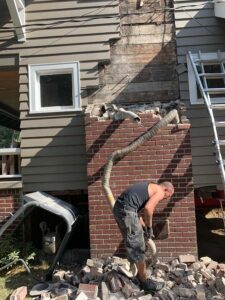
Manual demolition involves tearing down structures by hand. This method is labor-intensive and requires skilled workers. It is often used for delicate structures and historical buildings where precision is important.
When Manual Demolition is Necessary
You might need manual demolition for:
- Delicate Structures: Prevent damage to surrounding areas or elements within the structure.
- Historical Buildings: Careful demolition to preserve valuable or fragile elements.
Techniques and Tools
Manual demolition uses specific techniques and tools:
Hand Tools:
- Hammers and Chisels: Break down small sections without disturbing the rest of the structure.
- Crowbars and Pry Bars: Remove nails and separate materials.
- Sledgehammers: Break larger pieces of concrete or brick.
Safety Equipment:
- Gloves and Hard Hats: Protect against sharp objects and falling debris.
- Safety Goggles: Shield eyes from dust and particles.
- Safety Harnesses: Essential when working at heights.
High Reach Arm Demolition
High reach arm demolition is a method designed for taking down tall structures. This technique uses specialized machinery, such as a hydraulic excavator with a high reach arm.
The high reach arm can extend to great heights, making it ideal for demolishing buildings from the top down.
Benefits of High Reach Arm Demolition:
- Safety: Reduces the risk of accidents by allowing operators to work from a distance.
- Precision: Offers greater control, minimizing damage to neighboring buildings.
- Efficiency: Can handle large, tall structures quickly compared to traditional methods.
This demolition technique is often used in urban areas where space is limited and safety is a major concern.
It is also effective for historical renovations, where it’s important to avoid disturbing nearby, historical buildings.
Notable Projects:
- Skyscraper Demolition in Downtown Seattle: Used high reach arm demolition to carefully dismantle old office buildings without disrupting the busy city center.
- PNW Demolition’s Industrial Plant: Successfully dismantled a tall, outdated industrial plant while keeping nearby factories operational.
Crane and Ball Demolition
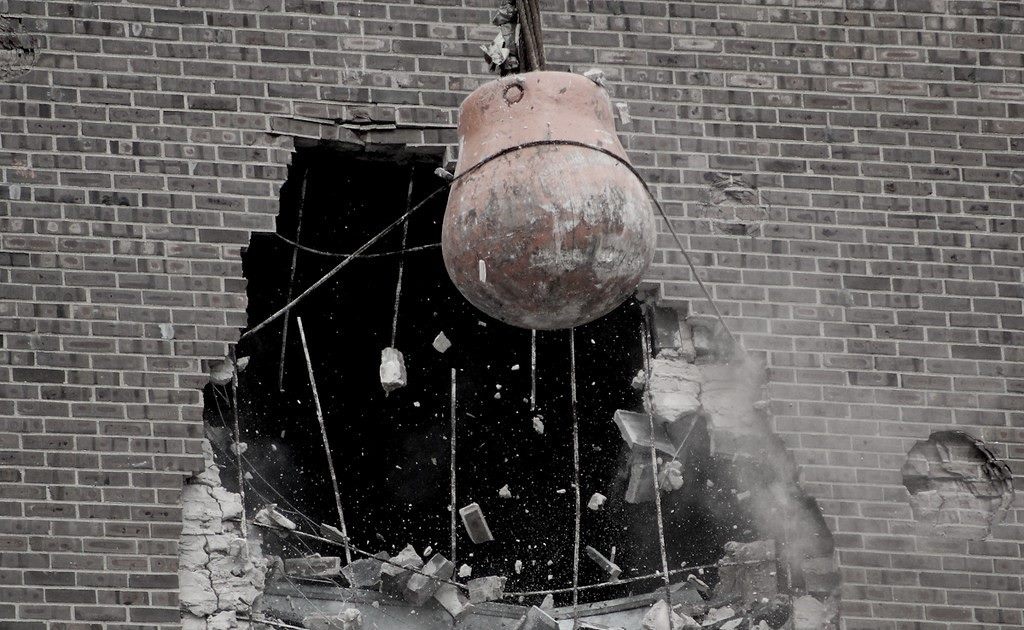
Crane and ball demolition, also known as wrecking ball demolition, is a traditional method in the industry. It involves swinging a heavy steel ball, typically weighing between 1,000 to 12,000 pounds, to knock down structures.
The ball is attached to a crane, which provides the necessary height and range of motion.
Method
The crane operator skillfully maneuvers the ball to impact the structure, causing it to collapse. This demolition method is especially effective for knocking down large, sturdy buildings quickly. The force of the ball can break through concrete, brick, and other tough materials.
Advantages
- High impact force: Efficient for demolishing sturdy structures.
- Speed: Can demolish buildings faster than some other methods.
- Simplicity: Uses primary equipment without complicated setup.
Limitations
- Precision: Less control compared to modern methods.
- Safety concerns: Requires a skilled operator to avoid accidents.
- Space requirement: Needs ample space to swing the ball, making it unsuitable for dense urban areas.
Emergency Demolition
Emergency demolition is crucial when you need to remove a structure quickly because it poses a safety risk. This service is essential in situations where there’s been significant damage that could lead to injuries or further property damage.
Types of Emergencies Requiring Demolition
- Fire-Damaged Buildings: Structures weakened by fire are often unsafe and need to be taken down immediately.
- Natural Disasters: After events like earthquakes, hurricanes, or floods, buildings can be left structurally unsound.
- Sudden Structural Failures: Sometimes buildings can fail without warning, necessitating rapid demolition to prevent injuries.
- Procedures and Protocols
The safety of both the crew and the public is top priority during emergency demolitions. Here’s how it’s done:- Assessment: Perform a thorough evaluation of the structure’s condition to plan the demolition safely.
- Permits: Quickly secure any required permits and notify relevant authorities.
- Safety Measures: Set up barriers and make sure all personnel wear protective gear.
- Execution: Use the appropriate demolition method, like controlled demolition or high-reach arm cranes, to dismantle the structure efficiently.
Ready to get started?
Contact us today!

